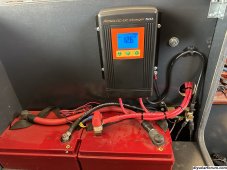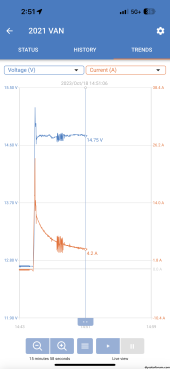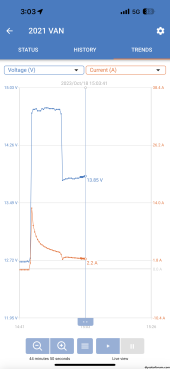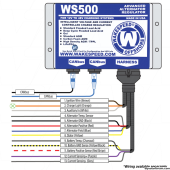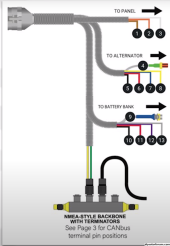justinm001
Solar Addict
- Joined
- Dec 18, 2022
- Messages
- 1,540
Just to confirm do you have any lead acid batteries in this system?The voltage drop is what limits the output but it is the current that creates the drop. When the battery is low, the current will be max and on my coach is self-limiting to about 60A. once the battery gets closer to full, it quits taking so many amps and the voltage drop is less.
To put it a different way, if my LFP batteries need to be charge, I will get 60A and the voltage at the LFP will be 13.0 to 13.4v. If I am coming off the campground and the battery is full, the current to the battery will be nil and the voltage will be 14.4v. No current = no voltage drop.
I'm confused about a couple things. Is the voltage drop from wire length limiting the batteries ability to pull current or is it simply the wire size limiting the current? If it's the wire size isn't it getting severely hot?
If it's the wire length and voltage limiting the current it seems like your entire system is relying on the alternators regulator to be at that specific voltage. If this failed and voltage ramped up even a little it could cause all kinds of issues.
I was under the assumption that lfp pulls all the power it has available at all times until it's full.




